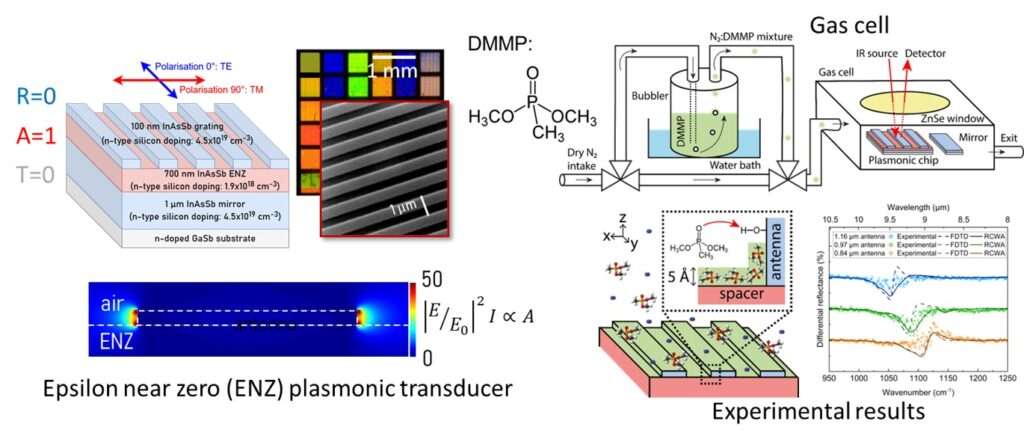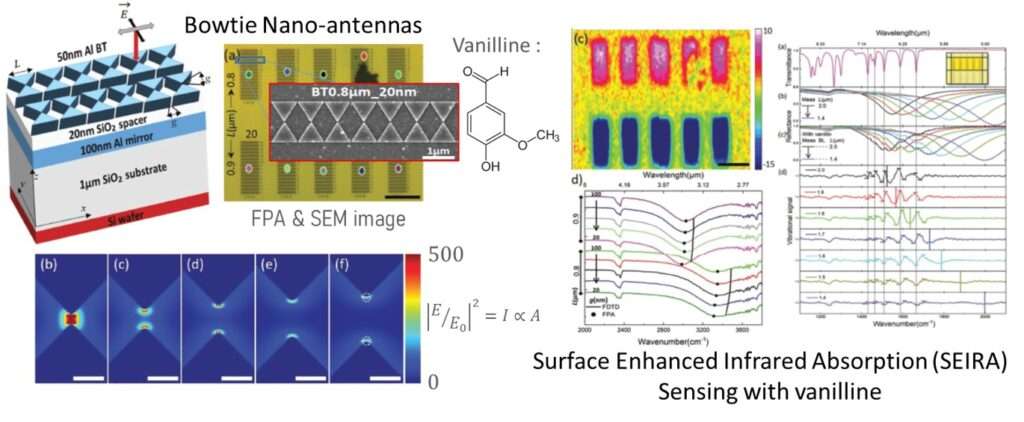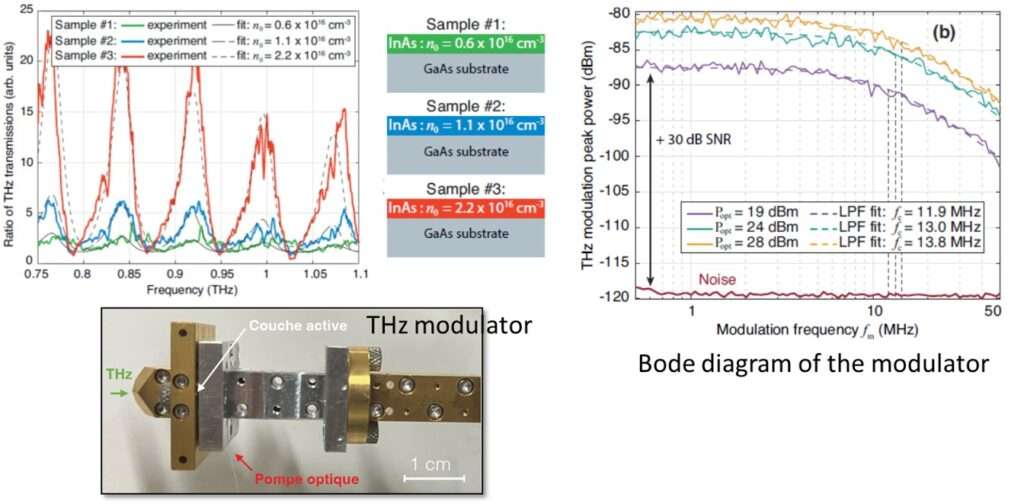Plasmonics
Staff: F. Gonzalez Posada, T. Taliercio, L. Cerutti, J.-B. Rodriguez.
Post-docs: P. Loren (2020-2021), G. Sombrio (2021-2022).
PhD students: M. Najem (2019-2022), P. Fehlen (2020-2023), J. Guise (2020-2023), C. Gureghian (2020-2024), S. Hajji (2022-2025).
Projects: SEA (pre-maturation Occitanie, 2020-2021), NanoElastir (ASTRID 2020-2023).
Other collaborations: S. Blin (IES), G. Thomas, D. Spitzer (Institut Saint-Louis), E. Centeno, R. Smaali, A. Moreau (Institut Pascal-France), G. Vincent (ONERA), P. Biagioni (Politecnico di Milano, Italy), F. Lagugné (London, Canada), A. Hierro (ISOM, Spain).
Objective
We approach the strong coupling between free electron gas and electromagnetic wave, plasmonics, in an original way. Heavily doped semiconductors (HDSC) and Al are CMOS compatible, paving the way for their integration into low-cost, mass-produced devices. In addition, HDSCs are particularly well suited to mid-IR and THz plasmonics. Indeed, the plasmonic properties of HDSC-based nano-antennas persist into the THz range, while noble metals (Au, Ag) behave as perfect conductors without plasmonic properties. Furthermore, HDSCs maintain their plasmonic properties by adjusting their doping level to bring their plasma frequency into the targeted spectral range. Finally, the internal losses of HDSC, such as those of Si-doped InAs, are two orders of magnitude lower than those of Au.
The objective is, based on simulations, to make the most of III-Sb doped semiconductors in the field of plasmonics to achieve: i) non-destructive control of epitaxial doping, ii) optical transducers for IR sensing, and iii) active THZ and IR light modulators.
Recent results
1. Epsilon-near-zero transducer
We designed and fabricated a plasmonic transducer based on epsilon near zero (ENZ) material, i.e. a highly doped semiconductor (InAsSb:Si), to selectively detect a gas simulating sarin (DMMP). The use of ENZ material makes it possible to modify the electric field distribution of the transducer to improve its sensing properties. More details can be found in Fehlen et al., and Fehlen et al..

2. SEIRA from the visible to the mid-IR
We designed and fabricated aluminium bowtie nano-antennas to detect molecules by surface enhanced infrared absorption (SEIRA) spectroscopy from the visible to the mid-IR. The electric field is locally enhanced due to the plasmonic antenna effect combined with the gap plasmon effect. A record electric field enhancement factor has been demonstrated in this adapted design. More information can be found in Najem et al. and Najem et al..

3. THz modulator
We developed an optically pumped modulator in the THz spectral range. Based on free-carrier photogeneration by a near-IR laser in an InAs layer, we monitor its optical properties. The InAs is dielectric for off-pump and metallic for on-pump. The modulation frequency reaches 14 MHz at a relatively low irradiance (10 W/cm2) and the modulation depth is 96%.
